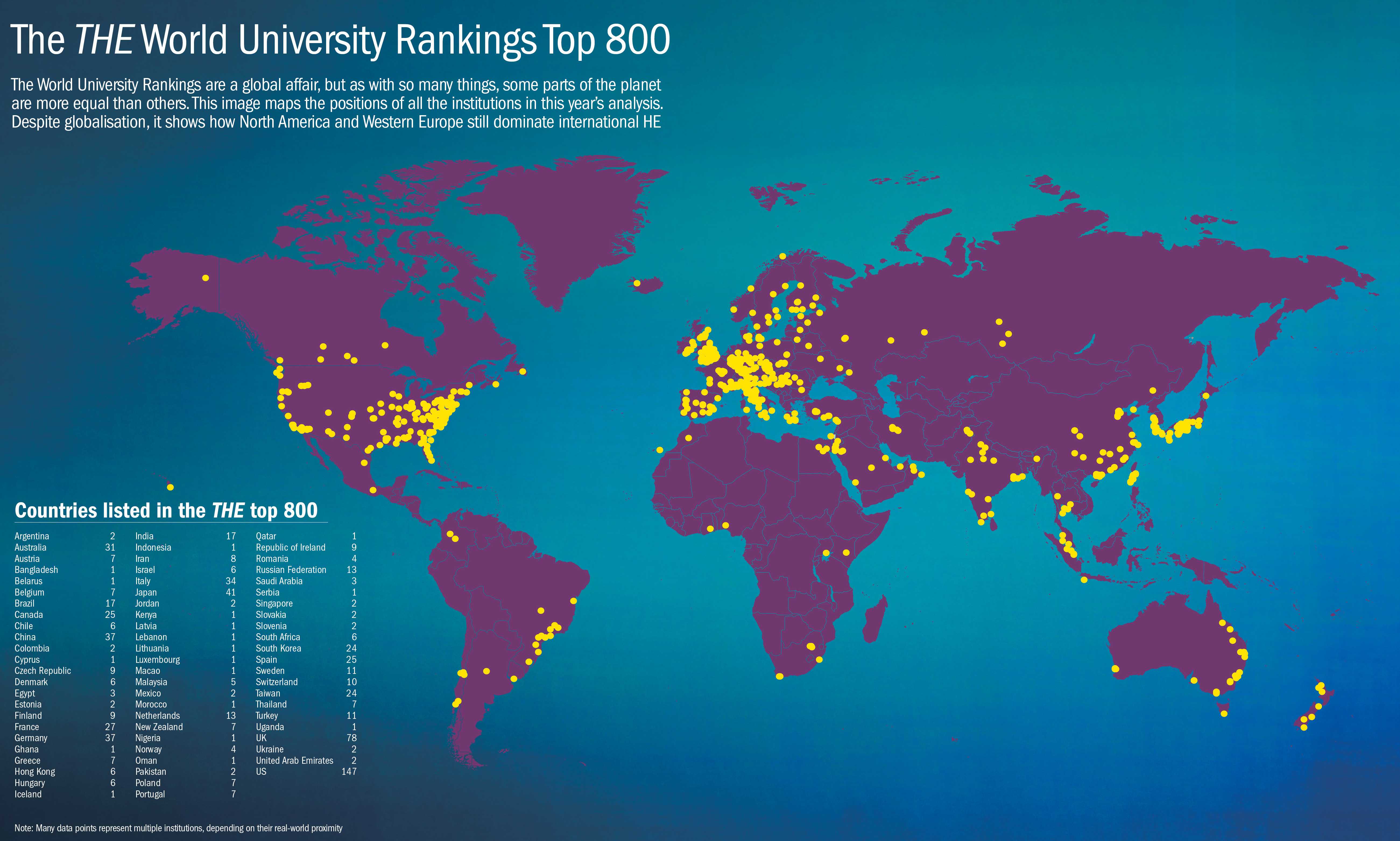he world’s best universities have been revealed with the release of the 2015-16 Times Higher Education World University Rankings, which feature more institutions and countries than ever before.
For the fifth year running, the California Institute of Technology
scoops the top spot – a position it has held on to since it toppled
Harvard University’s reign in 2011-12.
Oxford University vice-chancellor Andrew Hamilton said: “Students coming to Oxford benefit from having both the resources of world-renowned research centres across a wide range of disciplines and a highly personalised education where access to leading academics is a central part of both postgraduate and undergraduate teaching.
“Very few other universities offer this combination, and students who come to Oxford experience an institution where ground-breaking research and excellent teaching are both highly valued.”
Germany challenges the two powerhouses this year with 37 universities ranked in the top 600, and 20 of these within the top 200, behind the US with 63 universities and the UK with 34 universities in the top 200.
The best university in Germany is LMU Munich, which scored consistently well across all the performance categories, and particularly well for the income it receives from industry.
Germany’s success is in part due to its Excellence Initiative, which spent €2.7 billion over the past five years on a select group of the country’s top universities.
If you are heading to Australia for university, chances are you’ll be studying at a world-leading institution wherever you go.
The country achieved a standout performance this year, with 30 universities ranked in the top 600 – just under 75 per cent of the 43 institutions in the country.
For comparison, the US’ 137 universities in the top 600 represent under 3 per cent of its universities, Canada sees just over a quarter of its 98 universities ranked in the top 600, and the UK’s 62 top-ranked institutions count for 57 per cent of British universities.
Margaret Sheil, provost of the University of Melbourne, explained: “Australian universities, much like Australians, are outward looking and globally focused. We attract, welcome and seek the best students and academics from all over the world.
“Since 2012, the Australian government has streamlined and improved its student visa policy to make study in Australia easier for international students.
“Technological developments in the last decade have also accelerated international collaboration and engagements.
“Australian universities, including the University of Melbourne, have taken full advantage of globalisation and the way this diminishes the barriers previously enforced by physical geography.”
The best scores for teaching went to Caltech and Stanford, while the best scores for research were achieved by Harvard and Oxford.
Leading the way for international outlook are Qatar University, ranked between 601-800, and Luxembourg University.
Both institutions boast multilingual campuses and courses. They are reputed to attract the sons and daughters of foreign expatriates.
Overall, 800 universities were included in this year’s World University Rankings – double the number ranked in 2014-15.
Top 10: The THE World University Rankings 2015-16
| Rank | University | Country | Overall Score |
| 1 | California Institute of Technology | US | 95.2 |
| 2 | University of Oxford | UK | 94.2 |
| 3 | Stanford University | US | 93.9 |
| 4 | University of Cambridge | UK | 92.8 |
| 5 | Massachusetts Institute of Technology | US | 92.0 |
| 6 | Harvard University | US | 91.6 |
| 7 | Princeton University | US | 90.1 |
| 8 | Imperial College London | UK | 89.1 |
| 9 | ETH Zurich–Swiss Federal Institute of Technology Zurich | Switzerland | 88.3 |
| 10 | University of Chicago | US | 87.9 |
















0 comments:
Post a Comment